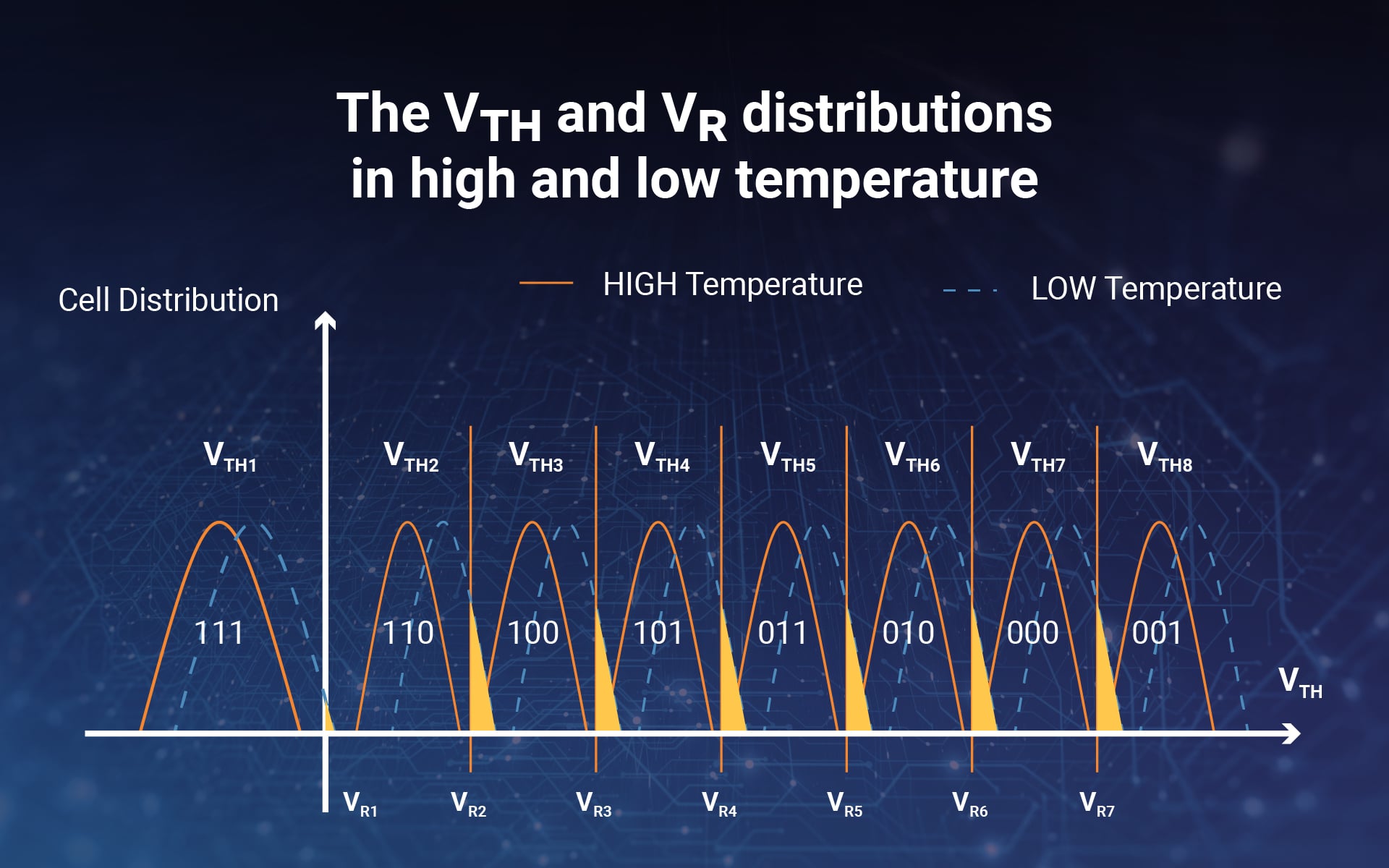As the shining star of storage devices, SSDs are increasingly used in the automotive industry. However, unlike the standard use-cases of consumer or industrial data storage devices, SSDs need to match the vehicles they serve by coping with various harsh environments ranging from ice worlds to harsh deserts while dealing with rapid temperature changes.
The cross-temperature effect caused by reading and writing at different temperatures has always been an enormous challenge for NAND Flash. It’s also an issue that many SSD manufacturers urgently want to address. As a leader in the storage industry development, Phison has proposed a new solution called X-Temp (named after cross-temperature effect). Here’s how X-Temp helps maintain the reliability and data integrity of NAND Flash, even under severe temperature changes.
The weaknesses of NAND flash
NAND Flash consists of millions of floating-gate transistors that are used to capture electrons in the gate. By detecting the number of electrons, NAND Flash distinguishes between bit 0 and bit 1. This structure makes data storage efficient and straightforward, but it also exposes two significant concerns under different temperature conditions:
1. Electron Escape: When high temperatures are reached, electronic activities become more and more active, and it is more difficult for the floating-gate to trap electrons as expected, which causes an increase in error bits.
2. Cross-Temperature Effect: Memory cells are constructed from various materials with different temperature coefficients of resistance (the degree of resistance that changes with temperature). As the temperature moves from low to high or high to low, the threshold voltage VTH has a more significant shift with temperature than the reference voltage VR [1]. This temperature difference causes error bits to be generated when writing and reading at different temperatures.
Although the firmware of an SSD has many error correction mechanisms, a large number of error bits caused by extreme temperature changes are still difficult to recover and result in uncorrectable data, which is unacceptable for the host or user.
How X-Temp addresses these temperature issues
Imagine how hot your car becomes on a sunny day of 100 ̊F. The actual temperature may surprise you; a dark dashboard or steering wheel could reach up to 157 ̊F [2].
This means electronic devices in a vehicle may experience extreme temperature and cross-temperature conditions. The cross-temperature issue is an exceptionally massive challenge for storage, especially in 3D NAND devices, which will increase data error bits and eventually lead to data UECC (Uncorrectable Error Correction Code) errors.
Low-temperature writing and high-temperature reading is the worst-case scenario for data error [3].To solve this problem, Phison has developed an innovative algorithm called X-Temp, and the core concept is to refresh the data by referring to the dynamic temperature difference detection. When data is written to NAND flash, a set of flags representing the current temperature are also recorded. Once the temperature change exceeds a specific range, it will cause the UECC to rise accordingly. As a precaution, the firmware will refresh the risky data in the background mode by rewriting the data to a spare block.
The X-Temp feature can ensure that data is written and read at almost the same temperature, ensuring data integrity even in extreme cross-temperature environments.
Phison – Your number one automotive data storage partner
In automotive applications, a wide range of temperature changes has always been a considerable and unavoidable challenge, leading to an increase in bit error rates in NAND flash. Phison has always been committed to providing robust storage solutions. By being actively involved in data management, the X-Temp feature helps SSDs be more reliable in all automotive applications.
References used in this article:
1. Semantic Scholar
2. Arizona State University
3. Flash Memory Summit













